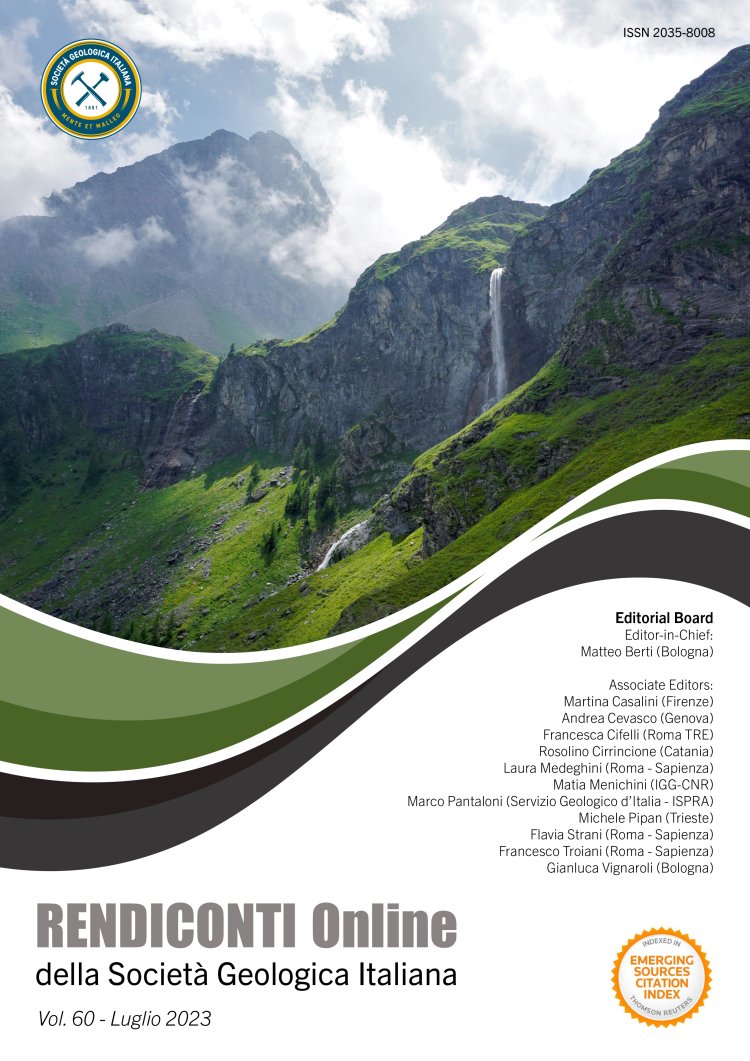

Defining the degree of fracturing in fault zones: implications in the study of landslide susceptibility
Davide Vianello1
1Department of Earth Science, University of Torino, Torino 10125, Italy.
Corresponding author e-mail: davide.vianello@unito.it
Volume: 60/2023
Pages: 72-77
Abstract
This contribute describes the fracture network of rock masses along a section normal to two parallel faults between Claviere and Cesana Torinese (Western Alps), applying traditional scanline method, topological analysis and geomechanical classification by Geological Strength Index. Based on the variation of fracture intensity defined by topology, the aim of this study is to estimate the width of the zones with a more pervasive fracturing around the faults. These zones could be considered as a reference to define the average “buffer zone” of the analysed fault system in landslide susceptibility studies at regional scale. In the studied area, the fracture intensity is derived from topological analysis (i.e., total length of fractures per unit area – P21 values) abruptly increases in areas 200 to 400 metres-wide adjacent to the considered faults with values of fracture intensity greater than 20 m/m2 and 70 m/m2 respectively. The geomechanical GSI classification underlies a coherent variation in the degree of fracturing in the analysed areas close to the faults.
Keywords
Get Full Text